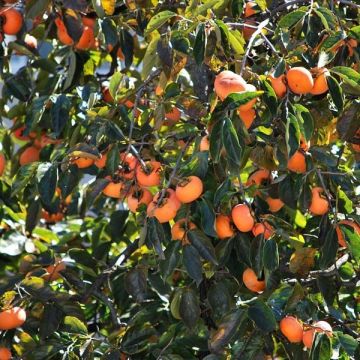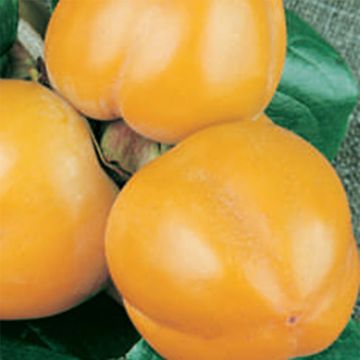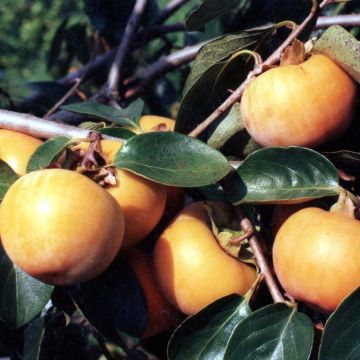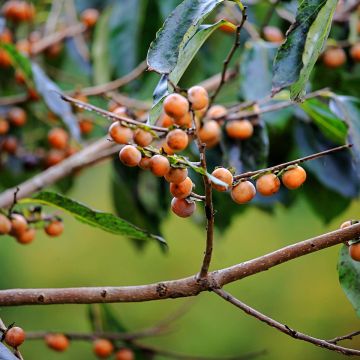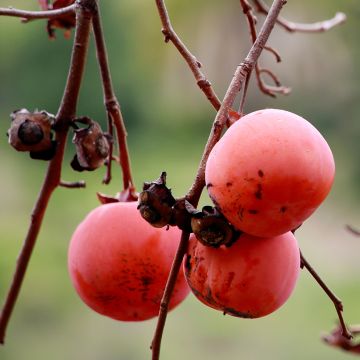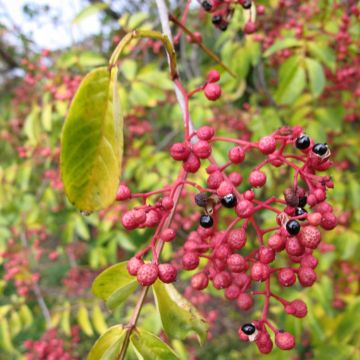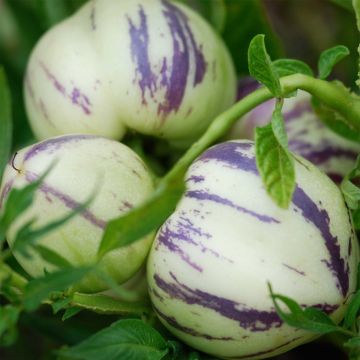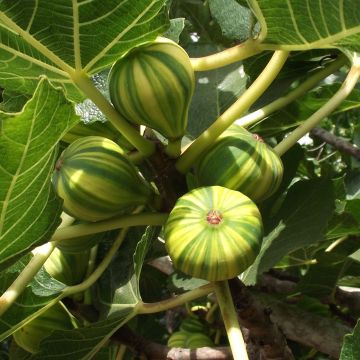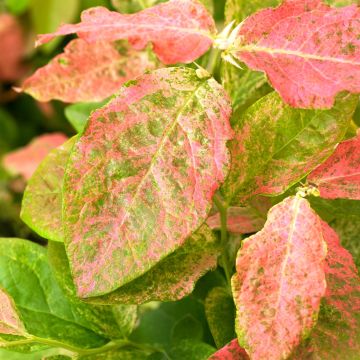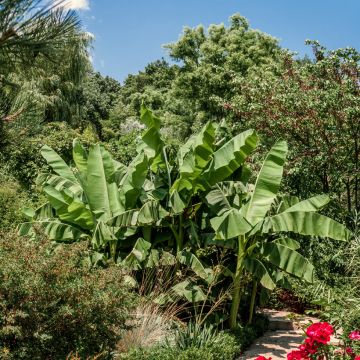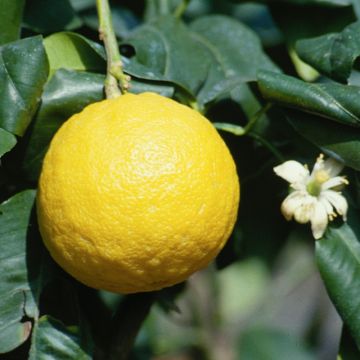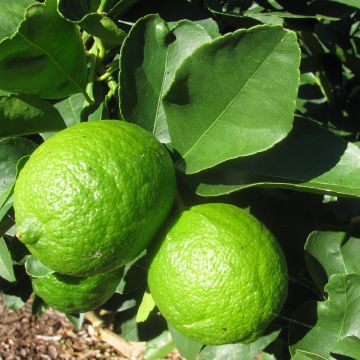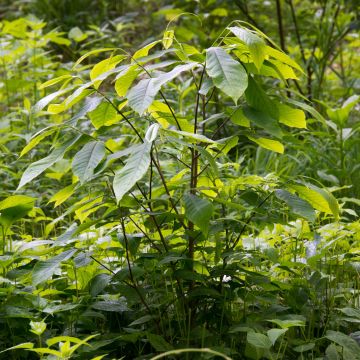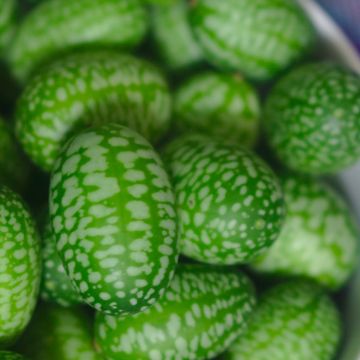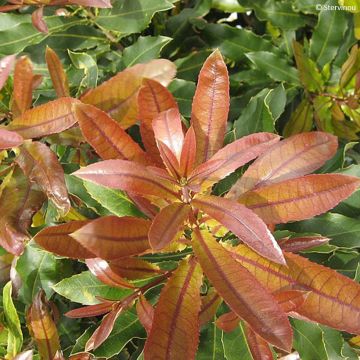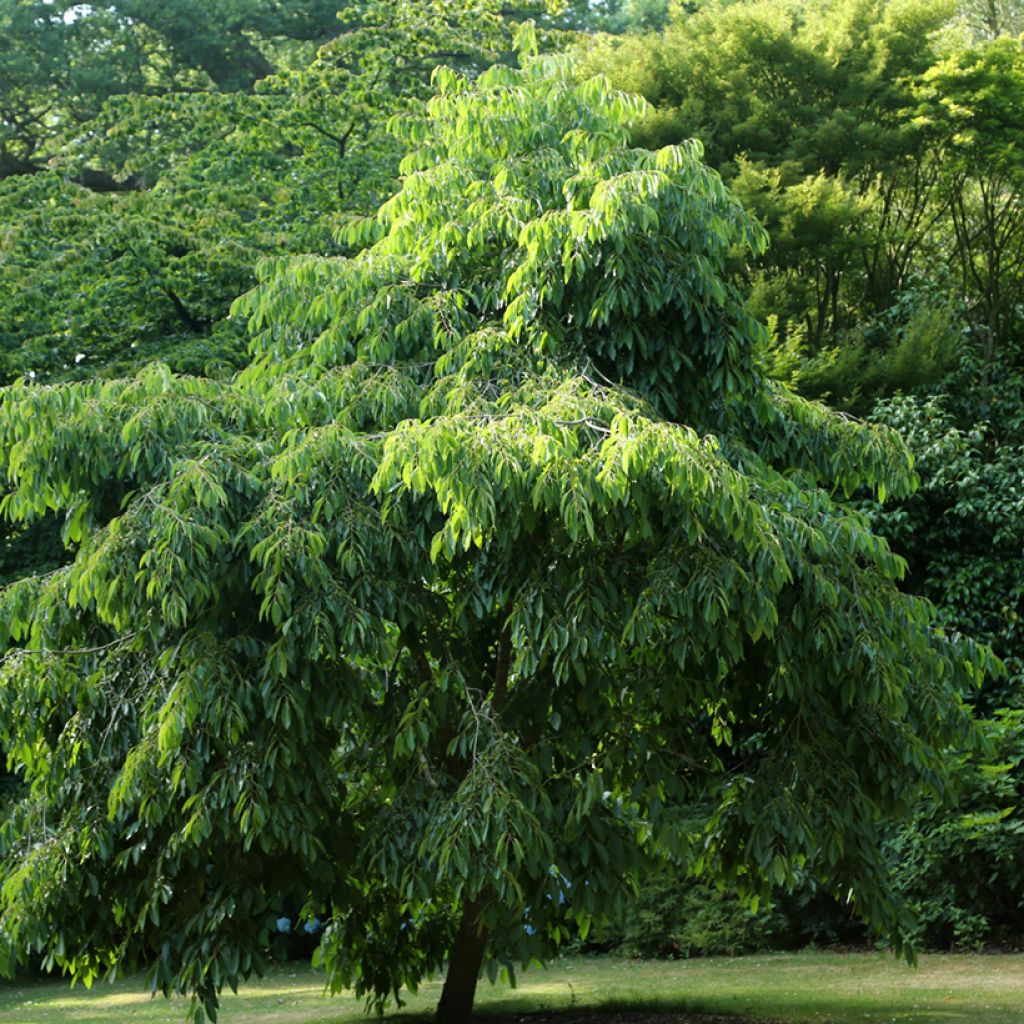

Diospyros virginiana - American Persimmon
Diospyros virginiana - American Persimmon
Diospyros virginiana
American Persimmon, Common Persimmon
Why not try an alternative variety in stock?
View all →This plant carries a 24 months recovery warranty
More information
We guarantee the quality of our plants for a full growing cycle, and will replace at our expense any plant that fails to recover under normal climatic and planting conditions.
From €5.90 for pickup delivery and €6.90 for home delivery
Express home delivery from €8.90.
Delivery to Corse prohibited: UE law prohibits the import of this plant from mainland France to Corse as part of the fight against Xylella fastidiosa. Please accept our sincere apologies.
More information
Does this plant fit my garden?
Set up your Plantfit profile →
Description
The American Persimmon, in Latin Diospyros virginiana, is a large deciduous tree valued for its edible and decorative fruits in early autumn. Its round and flattened fruits, about the size of a tomato, are yellow-orange and contain sweet flesh with delicate flavours of apricot, mango, vanilla, and caramel when fully ripe. The American Persimmon is a hardy fruit and ornamental tree, best suited for warm and slightly humid summer climates.
The American Persimmon, also known as the Common Persimmon, is a fruit tree native to the southern United States, often appreciated for its ornamental appearance as well as its edible fruits. It prefers well-drained soils with a tendency towards loam and can be found in various habitats ranging from open forests to river valleys and plains. This tree can reach heights of 15 to 30 m in its natural habitat. In our climates, it will reach a height of 12 to 15 m. It has a rounded crown with spreading branches forming a fairly regular and sometimes almost spherical shape. Its bark is distinctive with coarse squares, resembling grey-brown plates.
The leaves of the American Persimmon are simple, alternate, and 5 to 15 cm long. They are generally ovate with a pointed tip and smooth edges. In autumn, they take on beautiful yellow, orange, and scarlet-red hues before falling. The flowers are small, cream-white and fragrant, appearing in May-June. The tree is often dioecious, meaning that male and female flowers are found on separate plants, although there are exceptions. For this reason, it is essential to plant two trees in the garden. The fruit, called Persimmon, is technically a berry. It is round, about 2 to 6 cm in diameter, and changes from green to yellow to a bright orange at maturity in autumn. Its flesh is very astringent when not fully ripe but becomes sweet and edible when ripe. The wood of the American Persimmon is heavy, strong, very fine, and used in woodturning. Its innermost part, which can take a century to form, resembles ebony. It is an extremely fine and almost black heartwood.
Be patient: harvesting often begins in the 3rd or 4th year. Pick the Persimmons with secateurs. They can be harvested when soft but must be consumed quickly. You can also pick them while still firm and ripen them indoors, wrapped in newspaper with the stem down, near apples. For longer storage, opt for freezing. The Persimmon is consumed when it is almost over-ripe, meaning very soft, almost too ripe. This ripening phase is necessary to remove the astringency of the fruits. In terms of cooking, the Persimmon is best enjoyed raw, cut in half and eaten with a spoon. It can be added to fruit salads, crumbles, compotes, or occasionally accompany savoury dishes. It is rich in vitamin C and provitamin A.
Diospyros virginiana is much hardier than its Asian cousins such as Diospyros kaki. While its fruits are smaller, the tree is larger and bears fruit more regularly. It is an interesting species for agroforestry.
Report an error about the product description
Plant habit
Flowering
Foliage
Botanical data
Diospyros
virginiana
Ebenaceae
American Persimmon, Common Persimmon
Diospyros mosieri
North America
Other Persimmon trees - Diospyros
Planting and care
Diospyros virginiana should be planted in the autumn-winter, when the ground is not frozen, or alternatively in spring with regular watering. Choose a sunny and sheltered location. This persimmon tree thrives in loamy, deep soils with a tendency towards limestone (avoid very acidic and/or waterlogged soils). It thrives in well-drained and fertile soils. If you plant multiple plants, space them 5 to 7 metres apart in all directions.
Soak the root ball in water for a few minutes before planting. Dig a hole 3 to 4 times the volume of the root ball, making sure to separate the subsoil from the topsoil. Mix the subsoil with crushed horn and well-rotted compost or potting soil, then pour this mixture into the planting hole. Install a stake. Place the root ball without burying the collar, backfill with the topsoil and firm it down. Create a basin around the base and water generously. Attach the stake to the plant, crossing the tie in a figure of eight without touching the trunk. Water regularly in the first year and then as needed, mainly in high temperatures.
In spring, every year, apply well-rotted compost by raking into the surface, taking care not to damage the roots.
The Persimmon is not very susceptible to diseases and pests.
Planting period
Intended location
Care
This item has not been reviewed yet - be the first to leave a review about it.
Unusual and exotic fruit trees
Haven't found what you were looking for?
Hardiness is the lowest winter temperature a plant can endure without suffering serious damage or even dying. However, hardiness is affected by location (a sheltered area, such as a patio), protection (winter cover) and soil type (hardiness is improved by well-drained soil).

Photo Sharing Terms & Conditions
In order to encourage gardeners to interact and share their experiences, Promesse de fleurs offers various media enabling content to be uploaded onto its Site - in particular via the ‘Photo sharing’ module.
The User agrees to refrain from:
- Posting any content that is illegal, prejudicial, insulting, racist, inciteful to hatred, revisionist, contrary to public decency, that infringes on privacy or on the privacy rights of third parties, in particular the publicity rights of persons and goods, intellectual property rights, or the right to privacy.
- Submitting content on behalf of a third party;
- Impersonate the identity of a third party and/or publish any personal information about a third party;
In general, the User undertakes to refrain from any unethical behaviour.
All Content (in particular text, comments, files, images, photos, videos, creative works, etc.), which may be subject to property or intellectual property rights, image or other private rights, shall remain the property of the User, subject to the limited rights granted by the terms of the licence granted by Promesse de fleurs as stated below. Users are at liberty to publish or not to publish such Content on the Site, notably via the ‘Photo Sharing’ facility, and accept that this Content shall be made public and freely accessible, notably on the Internet.
Users further acknowledge, undertake to have ,and guarantee that they hold all necessary rights and permissions to publish such material on the Site, in particular with regard to the legislation in force pertaining to any privacy, property, intellectual property, image, or contractual rights, or rights of any other nature. By publishing such Content on the Site, Users acknowledge accepting full liability as publishers of the Content within the meaning of the law, and grant Promesse de fleurs, free of charge, an inclusive, worldwide licence for the said Content for the entire duration of its publication, including all reproduction, representation, up/downloading, displaying, performing, transmission, and storage rights.
Users also grant permission for their name to be linked to the Content and accept that this link may not always be made available.
By engaging in posting material, Users consent to their Content becoming automatically accessible on the Internet, in particular on other sites and/or blogs and/or web pages of the Promesse de fleurs site, including in particular social pages and the Promesse de fleurs catalogue.
Users may secure the removal of entrusted content free of charge by issuing a simple request via our contact form.
The flowering period indicated on our website applies to countries and regions located in USDA zone 8 (France, the United Kingdom, Ireland, the Netherlands, etc.)
It will vary according to where you live:
- In zones 9 to 10 (Italy, Spain, Greece, etc.), flowering will occur about 2 to 4 weeks earlier.
- In zones 6 to 7 (Germany, Poland, Slovenia, and lower mountainous regions), flowering will be delayed by 2 to 3 weeks.
- In zone 5 (Central Europe, Scandinavia), blooming will be delayed by 3 to 5 weeks.
In temperate climates, pruning of spring-flowering shrubs (forsythia, spireas, etc.) should be done just after flowering.
Pruning of summer-flowering shrubs (Indian Lilac, Perovskia, etc.) can be done in winter or spring.
In cold regions as well as with frost-sensitive plants, avoid pruning too early when severe frosts may still occur.
The planting period indicated on our website applies to countries and regions located in USDA zone 8 (France, United Kingdom, Ireland, Netherlands).
It will vary according to where you live:
- In Mediterranean zones (Marseille, Madrid, Milan, etc.), autumn and winter are the best planting periods.
- In continental zones (Strasbourg, Munich, Vienna, etc.), delay planting by 2 to 3 weeks in spring and bring it forward by 2 to 4 weeks in autumn.
- In mountainous regions (the Alps, Pyrenees, Carpathians, etc.), it is best to plant in late spring (May-June) or late summer (August-September).
The harvesting period indicated on our website applies to countries and regions in USDA zone 8 (France, England, Ireland, the Netherlands).
In colder areas (Scandinavia, Poland, Austria...) fruit and vegetable harvests are likely to be delayed by 3-4 weeks.
In warmer areas (Italy, Spain, Greece, etc.), harvesting will probably take place earlier, depending on weather conditions.
The sowing periods indicated on our website apply to countries and regions within USDA Zone 8 (France, UK, Ireland, Netherlands).
In colder areas (Scandinavia, Poland, Austria...), delay any outdoor sowing by 3-4 weeks, or sow under glass.
In warmer climes (Italy, Spain, Greece, etc.), bring outdoor sowing forward by a few weeks.

































